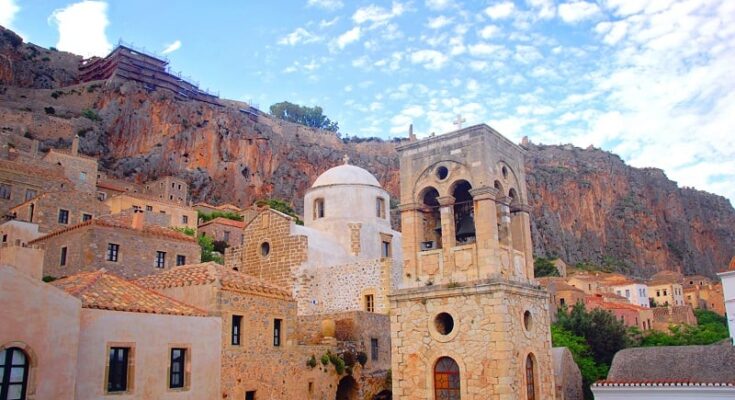Monemvasia, on the southeastern shores of the Peloponnese, Greece is Europe’s oldest continuously inhabited castle town.
Founded in 583 by inhabitants of the mainland seeking refuge from the Slavic and the Avaric invasion of Greece and surrounded by the Myrtoan Sea, Monemvasia is located on an island about half a mile long.
A man-made road and stone bridge leads to the castle gate and main entrance of the majestic castle town onward through the colorful and lively citadel offering all who visit her both stunning views and an unforgettable ‘ambiance’ of times past.
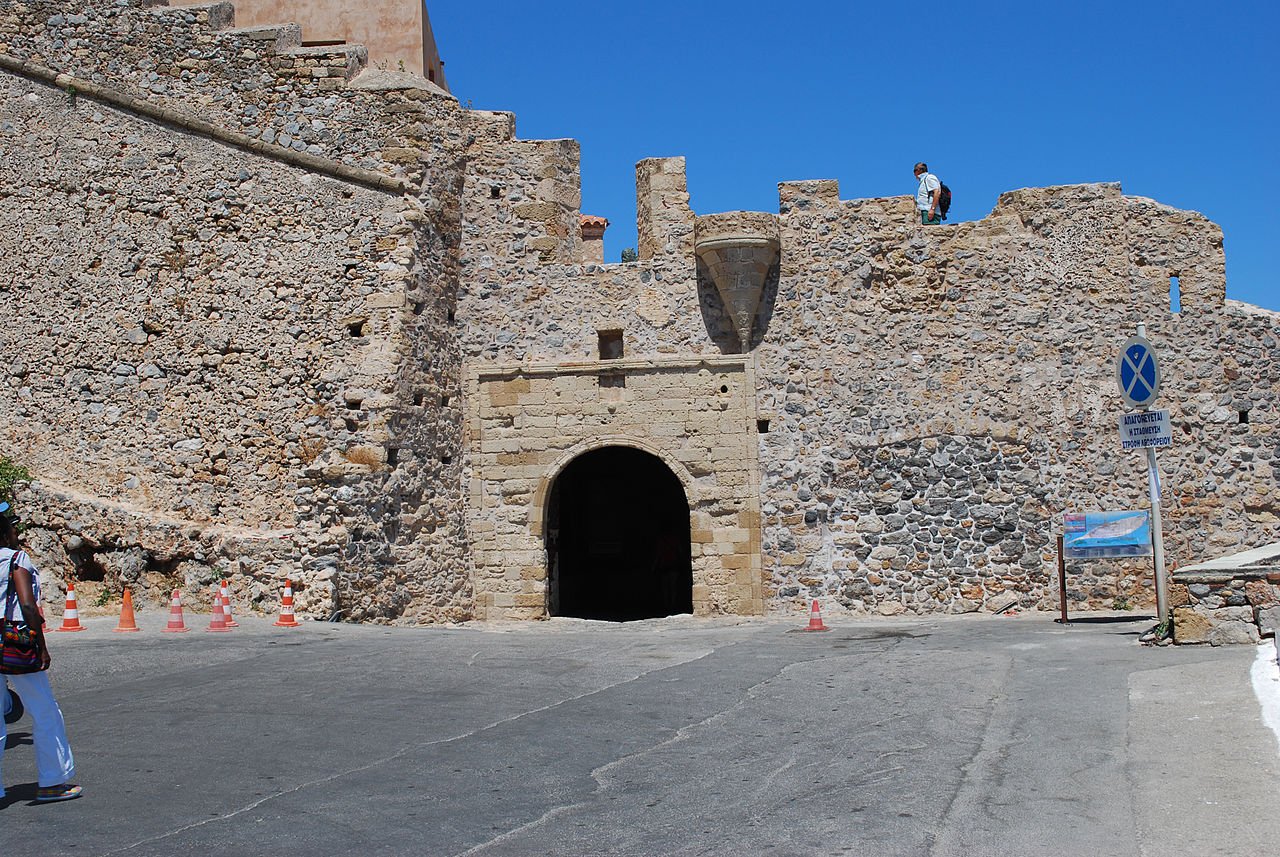
The fortress’ stone walls protected the citadel of Monemvasia from various invaders throughout its history. Invasions by the Crusaders, Venetians, and lastly, by the Ottomans have all left an indelible cultural and architectural mark, granting the citadel a unique charm and romantic atmosphere close to none.
Few places in Greece possess the combined charm, natural beauty, and historical significance to the extent that Monemvasia does.
The town’s name is derived from two Greek words, mone and emvasia, meaning “single entrance.” The “Gibraltar of the East” or a “stone ship” about to set sail, as the famous Greek poet Yannis Ritsos described his birthplace, beckons you for a journey through time, wandering through vaulted alleyways and past churches and aristocratic mansions.
Ritsos is buried in Monemvasia’s cemetery. His pompadoured bust stares at the sea from the courtyard of his childhood home in the lower town.
Ritsos’s verses, including the poem “Monemvasiotisses,” which was published in 1987 and is devoted to the town’s women, sometimes referred to his lonely rock with the single entrance. In its resilience, he celebrated freedom.
“So many years, besieged by mainland and by sea,” he wrote in his 1945 epic poem “Romiosini…They’ve all been hungry, all been killed, and yet—not a single one is dead,” Ritsos wrote.
Monemvasia: A trade center that withstood invasions
From the 10th century AD, the town developed into an important trade and maritime center. The fortress withstood the Arab and Norman invasions in 1147; farm fields that fed up to thirty men were tilled inside the fortress.
By 1193, Monemvasia was a major city in the Peloponnese. Ships sailing between Constantinople (now Istanbul) and what is now Italy stopped there, giving rest to aristocrats and high-ranking church members and loading Greek exports like olive oil and wine headed for the West.
William II of Villehardouin took it in 1248, on honorable terms after three years of siege; in 1259, William was captured by the Greeks after the Battle of Pelagonia, and in 1262, it was retroceded to Byzantine Emperor Michael VIII Palaiologos as part of William’s ransom.
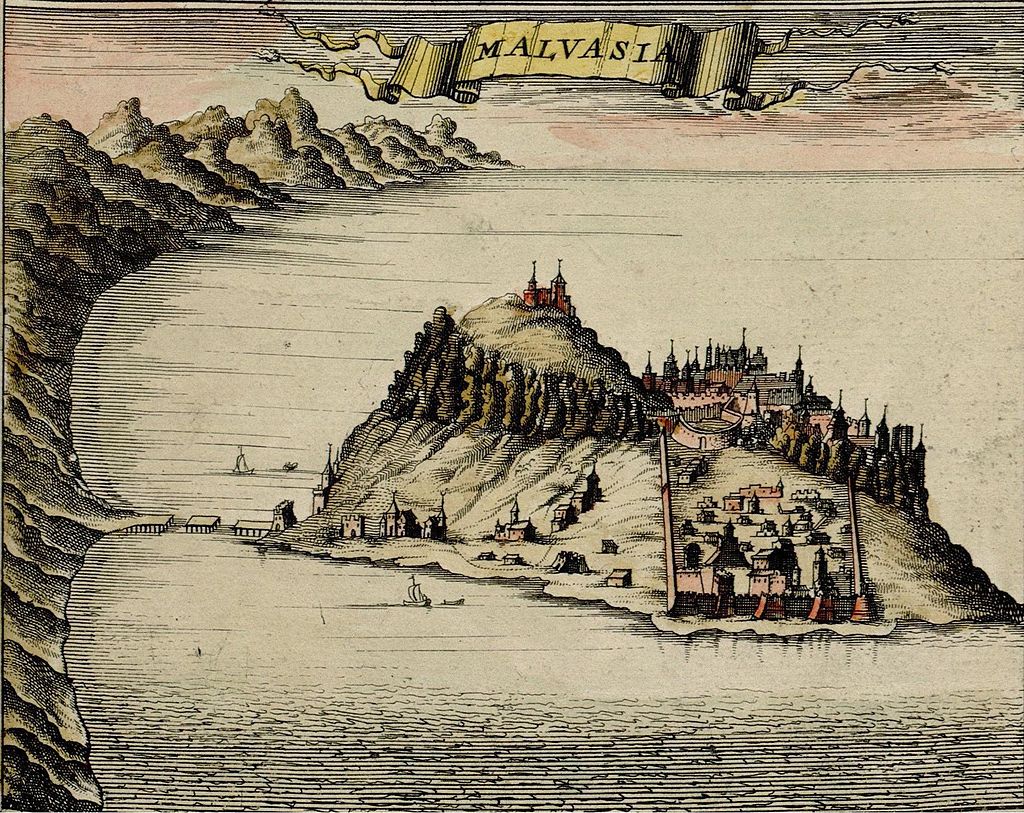
It remained part of the Byzantine Empire until 1460, becoming the seat of an imperial governor, a landing place for Byzantine operations against the Franks, the main port of shipment (if not always production) for Malmsey wine, and one of the most dangerous lairs of corsairs in the Levant.
After the fall of Constantinople in 1453, Monemvasia held out against the threats of Sultan Mehmed II in 1458 and 1460, when it became the only remaining domain of the Despot of the Morea, Thomas Palaiologos, the claimant of the Imperial throne. He had no forces to defend it; he offered it to the Sultan and finally sold it to the Pope.
The town was liberated from Ottoman rule on July 23, 1821 by Tzannetakis Grigorakis who entered the town with his private army during the Greek War of Independence. In 1822, it became the seat of the first national assembly.
The resurgence of the Greek castle town
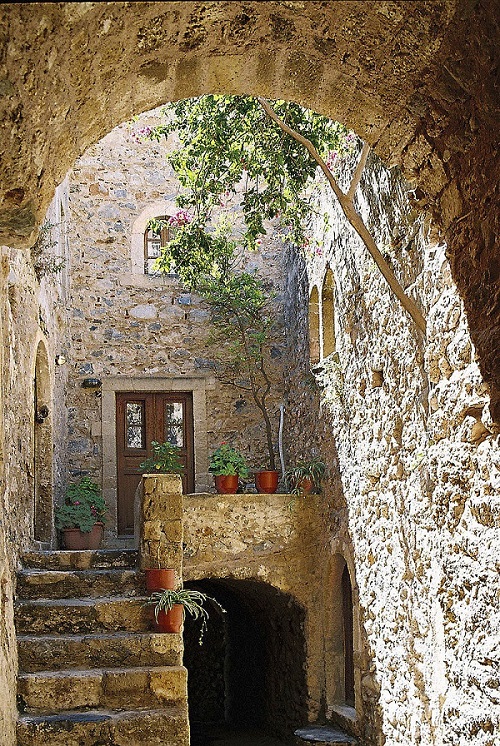
In more recent history, the castle town has seen a resurgence in importance with increasing numbers of tourists visiting the site and the region.
The charming town of Monemvasia is made up of a labyrinth of winding cobblestoned streets that can only be traveled by foot. The medieval buildings have been restored, and many of them converted to hotels, artisans shops, boutiques, cafés, and restaurants.
It has become an ideal romantic hideaway and honeymoon destination. Boutique bed & breakfasts and luxury hotels with suites boasting Turkish baths, mosaic floors, and flowering courtyards will transport the visitor to another time without stinting on modern comforts. In the dimly lit rooms with their vaulted ceilings and handmade wooden furniture, visitors will live their own fairy tale.
Lower town of Monemvasia
The lower castle town’s cobblestoned principal lane is lined with tall, slim, earthy-stone houses with arched doorways and vaulted rooms. The narrower buildings have older foundations while the wider buildings are newer, dating to the 18th or 19th centuries with modern touches, such as wrought-iron balconies.
In the lower part of the town, one can explore the ruins of the historic buildings situated there—among which the Muslim Mosque, a preserved 16th century building housing the Archaeological Museum, is located along with the magnificent Byzantine churches. Twenty-four temples and churches with Byzantine elements remain from the forty that once existed.
The oldest is Elkomenos Christos, located in the main square of the Lower Town. It was probably built sometime in the 6th or 7th century and has undergone numerous transformations. Its sparse exterior does not prepare visitors for what is on display inside, namely a massive icon of the Crucifixion that dates from the Palaeologan Renaissance (a short but culturally vibrant period during which the Palaeologos dynasty sought to restore the Byzantine Empire’s glory).
It is a stunning piece of ecclesiastical art that was looted and, after undergoing several adventures, eventually made its way back to Monemvasia.
Other churches worth seeing are Panagia Chrysafitissa, Agios Nikolaos, and Panagia tin Kritikia (Myrtidiotissa).
Upper town
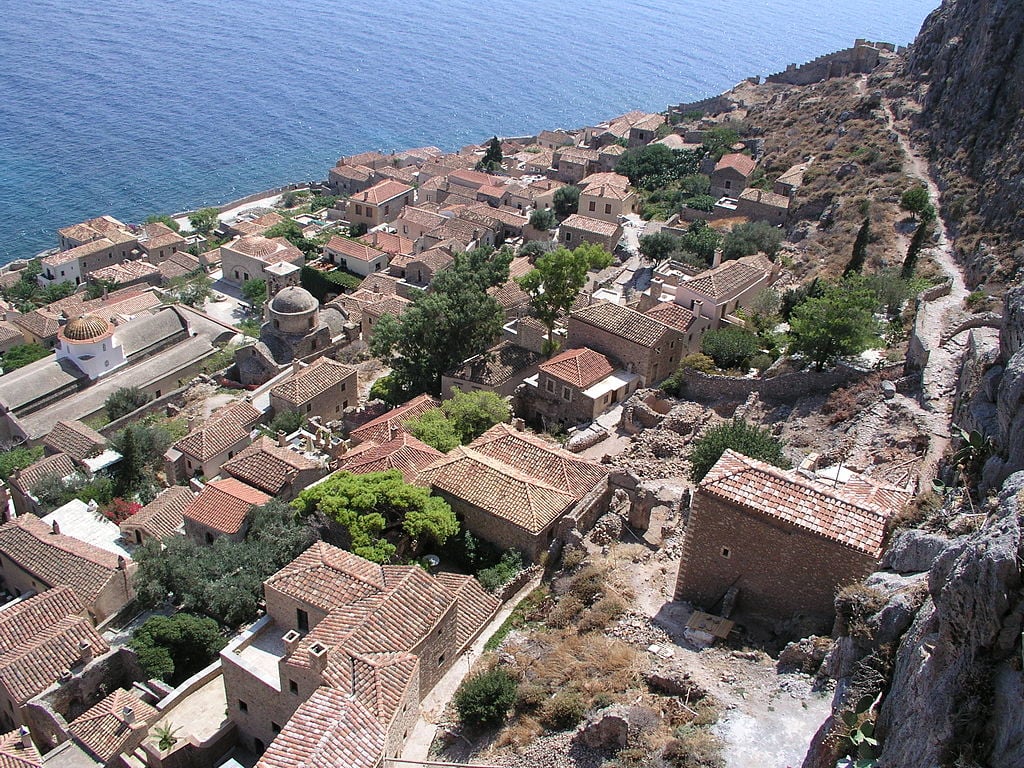
The uninhabited upper part of the town was home to the Venetian aristocracy and, although it’s a steep climb to reach the beautiful mansions (in the 17th-century, travelers once counted 500), you’ll be rewarded with panoramic views of the whole area.
The highest peak in the upper town is about 656 feet above sea level.
The half-Byzantine, half-Venetian church of Agia Sofia clings to the side of the cliff and is one of the most significant attractions in Monemvasia. Once inside, you’ll be awe-struck by its magnificent octagonal dome.

Historic lighthouse of Monemvasia
One of the most historic and imposing lighthouses in Greece is located at Monemvasia in the Peloponnese.
Built by the British in 1896 and automated in 1960, the lighthouse has recently been renovated. It sits on an iceberg-like slab of rock with sheer cliffs rising hundreds of meters from the sea.
The tower is seven meters (23 feet) tall, and its focal plane is 15 meters (49 feet).
The British writer Brian W. Aldiss once described Monevmasia as a “wonderful place,” where “only eagles and artists” should be allowed.
